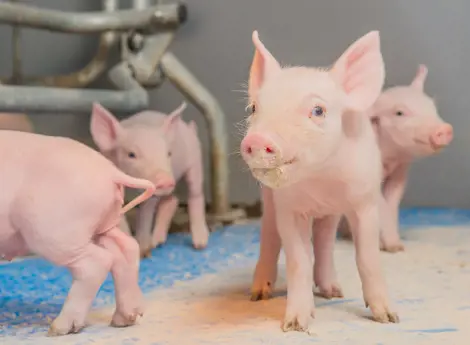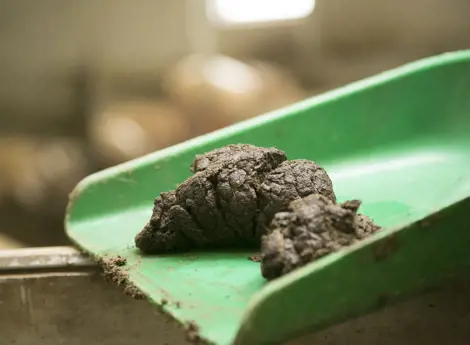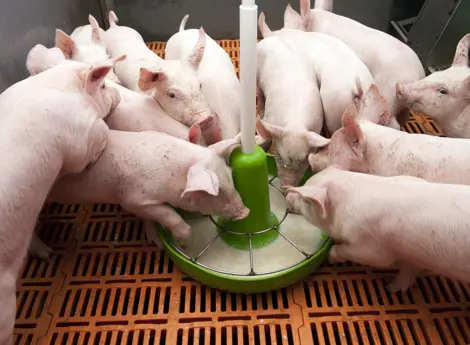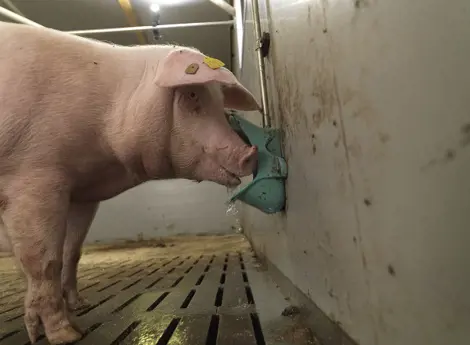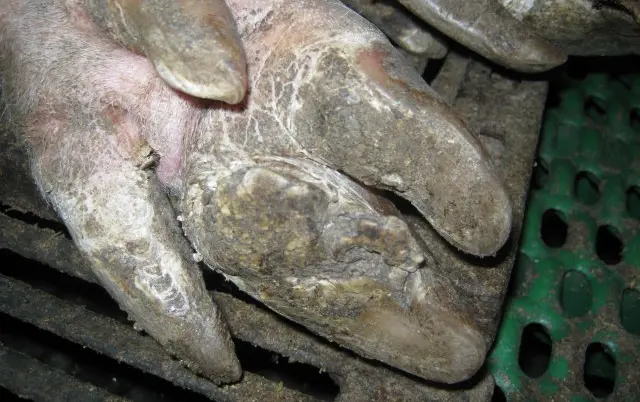
Undetected hoof lesions in sows have a significant economic impact for the farmer. This not only concerns the additional removal of sows due to serious lameness, but a reduction in milk yield in the farrowing compartment and a reduction in fertility as well. Many common problems include severe overgrown heels, white line lesions and lesions to the wall. A notorious defect are the infections around the coronary band.
Pain and Infection
The consequence of many of these hoof defects found in sows is that they mainly causes pain and infection. The primary problem generally is extreme pressure to the hoof. A consequence of this is lesions of the heel horn. Extreme pressure can have various causes.
Causes of Severe Pressure to the feet
Severe pressure to the feet can be caused by various factors. Think for example of gilts that have had a faulty leg position since birth. Another key factor is sows that become lame after slipping, damaging a claw, after which it becomes infected, and serious stiffness. Feed-related aspects can also be of influence.
Consequences of too much pressure
Too much pressure can lead to severe heel overgrowth. These lesions can be accompanied by cracks in the heel and wall. When the animal then walks in a wet surrounding with manure this is followed by an infection and pain in the foot.
Risk Factors
Key risk factors associated with foot lesions include wet grids, a cold environment, clogged grid openings, and regularly occurring (viral) infections among sows. Genetic factors potentially play a role as well. After all, the modern sow is not specifically selected for claw quality. In relation to the nutrition-related factors, the quality of the manure comes to mind. Loose manure is preferable over sticky manure. Furthermore, reference is made to minerals, such as zinc, copper and manganese. In addition, the feed must contain sufficient biotin.
Blood Analysis in farms with a high percentage of foot lesions
In recent years De Heus performed blood analyses in sows in various problem situations. The copper and biotin concentrations in the blood appeared to be sufficiently high in these situations. However, the extremely low zinc concentrations that were at times encountered, in spite of the legal maximum of an easily absorbed source of zinc mixed into the feed, were striking. This often involved pig farms where viral infections (such as flu or PRRS) were also present among the sows. It is known that sows experiencing infections have low zinc concentrations in their blood (see Graph 2). When blood zinc concentrations become too low, this negatively affects the making of horny tissues.
Hoof Check
To identify all foot health-related factors, we developed the so-called 'Hoof Check'. Hereby the foot health of a large number of your sows is assessed. In addition, housing and animal factors are considered. If necessary, a blood analysis is conducted among the sows in consultation with your veterinarian. Wall lesions to the heel is most commonly found during an assessment of foot health.
If you want to learn more about this topic, please contact your local De Heus' specialist



